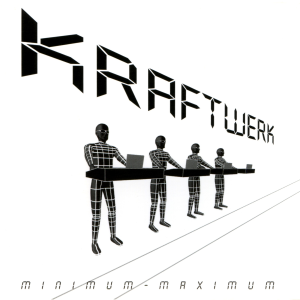f00f/eris
Here to follow content related to Star Trek, Linux, open-source software, and anything else I like that happens to have a substantial Lemmy community for it.
Main fediverse account: @f00fc7c8@woem.space
- 0 Posts
- 15 Comments

 30·1 year ago
30·1 year agoI’ve switched to FreeTube for now, it still works using the Invidious API. This is happening because YouTube is testing forced login to watch videos or use the API. There is a workaround it seems, but we’ll have to wait for all the major clients to roll it out.

 9·1 year ago
9·1 year agoDebian! It’s stable, elegant, and doesn’t impede customization. I distro-hopped a lot over the years - some that I ended up disliking included KaOS (severely limited software repository), Clear Linux (only way to get ffmpeg was to compile it from source) and Fedora (very slow); most I liked, and just decided to move on at some point. But I kept coming back to Debian, and eventually got to a point where instead of trying a different distro when Debian broke, I would just reinstall Debian.
I’d be interested to try VanillaOS or another “immutable” distro at some point in the future. See if they’ve matured enough for my day-to-day use.

 11·2 years ago
11·2 years ago- Create a source control repository containing all your code, and publish it to an online code forge. GitHub’s docs might help with this: https://docs.github.com/en/get-started/start-your-journey
- Choose an open-source license and add it to the repository as a LICENSE file. If you want to require any projects that build upon yours to be open-source too, the GNU GPL is a good choice. If you want to allow proprietary programs to include your library without releasing any source code other than that which is directly based on yours, the GNU LGPL is good for that. If you want to allow people to do whatever they want, even use all your code as the basis of a proprietary program without credit, the Unlicense is a good choice. There are a lot of licenses with different degrees of “copyleft” and attribution requirements in between. Technically publishing with a license file is all you need to do, but there are more things you should do.
- Create a README text file describing what your program does, and instructing users on how to compile and run it. Consider including more detailed documentation on how to use it, as well.
- Clean up your code and file layout so that it’s as easy as is feasible for other programmers to understand.
- Promote your project to whoever you think might find it useful!

 8·2 years ago
8·2 years agoI have to borrow a school laptop just to do proctored exams, because their “lockdown browser” doesn’t support Linux, and even if it did, it seems to do some things in kernel mode, so I don’t want it on my system.
Surprisingly, most classes at my university are entirely FOSS based, aside from that one piece of software, an obscure scientific program that only one assignment used, and MATLAB (which is easily replaced by GNU Octave.)

 6·2 years ago
6·2 years agoUnfortunately, the state of Android music players is not great. Currently I have two FOSS music players installed: Metro Music Player (the F-Droid version of Retro Music Player) and mucke. mucke has a ton of really cool features that improve the shuffle experience but it’s actually worse than most apps at pulling album art. Retro/Metro has beautiful UI, and has pretty good features for customization, but lacks the cool features mucke has and is less stable. Both have more than one annoying bug, but it took me a while to find music players that had this few dealbreakers.

 2·2 years ago
2·2 years agoI really liked the simplicity of GNOME To Do when it was around. The successor seems to be GNOME Endeavor, which I haven’t tried extensively.

 3·2 years ago
3·2 years agoRevolt is the most Discord-like FOSS chat app; it’s very easy to use and customizable. Rocket.chat and Mattermost do similar things and are more oriented toward organizations (the Slack/Teams Classic use case).

 1·2 years ago
1·2 years agoWhat makes this extra confusing to me, is that this doesn’t seem to happen to the same extent for Invidious instances. I’ve only needed to swap between two instances on Clipious, whereas on LibreTube I was hopping across their entire instance list and sometimes not finding even one working instance.

 2·2 years ago
2·2 years agoI know Okular can do at least most of that. Don’t think it’s available for Mac OS X, though.

 14·2 years ago
14·2 years agoDepends on a few factors, AFAIK as a non-lawyer. If the license allows closed-source derivatives (i.e. is permissive rather than copyleft), then anyone can create a closed-source version with all of the contributors’ changes, including the original maintainer. And anyone can choose to keep it open-source. The community contributions still to some extent belong to the contributors, though the license waives most of their rights.
Some projects are copyleft, but contributors are required to sign a license agreement (a CLA) which allows a single entity to change the license as they desire, including to closed-source - this is a good reason to avoid such projects. The contributors don’t own their work in such a case, but they can still fork the old project as it was before being taken closed source.
In a copyleft (e.g. GPL) project with no CLA, it’s illegal for anyone to make a closed-source version, and a major contributor could sue even the maintainer for doing so.
In all such cases, the change to a closed-source model does not erase the existence of the open-source code with community contributions. A fork is always possible.

 6·2 years ago
6·2 years agoThere is a complete set of free assets, in the form of Freedoom. Also, the official Steam version is closed-source, so make sure you’re getting a free source port. (Most distros have a few in their repos, and Freedoom+GZDoom is also in Flathub.)

 7·2 years ago
7·2 years agoI highly recommend playing Doom with the Crispy Doom source port and the Freedoom data files.
For something more modern, Xonotic is about the best-looking FOSS game out there and an excellent multiplayer arena shooter.

I’ll probably use Codeberg or another Forgejo server for my next programming project, if/when I have one that is far enough along to publish (motivating myself to get that far is a tall task). Until then, everything I’d consider contributing to is either on GitHub, or is self-hosting some other software, so I don’t have a reason to create an account yet.